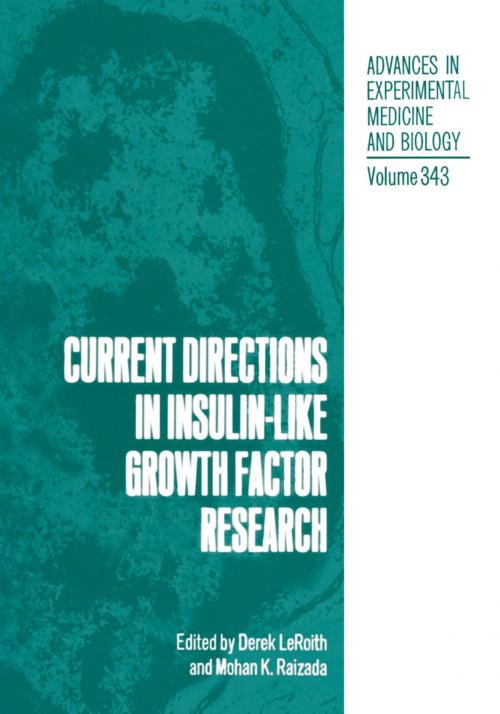Current Directions in Insulin-Like Growth Factor Research
Nonfiction, Health & Well Being, Medical, Specialties, Internal Medicine, Endocrinology & Metabolism, General| Author: | ISBN: | 9781461529880 | |
| Publisher: | Springer US | Publication: | December 6, 2012 |
| Imprint: | Springer | Language: | English |
| Author: | |
| ISBN: | 9781461529880 |
| Publisher: | Springer US |
| Publication: | December 6, 2012 |
| Imprint: | Springer |
| Language: | English |
The study of the insulin-like growth factor (IGF) family has become an exciting area of investigation. Initially, this family consisted of ligands (insulin, IGF-I and IGF-m and receptors (the insulin receptor, the type I or IGF-I receptor and the type II or IGF-IYM-6-P receptor). Subsequently, it was discovered that six specific binding proteips (lGFBPs 1-6) playa major role in the actions of this growth factor family. In addition, there are now more potential receptors when one considers the possible roles of the insulin-receptor related receptor (IRR) and hybrid receptor dimers composed of insulin and IGF-I receptor (half-receptors). Another important aspect of this area of research is the realization that the IGFs are not only essential for normal growth and development but, in addition play an important role in the normal specialized function(s) of all tissues of the body, including the nervous system, skeleton, reproductive system, kidney, and the immune system, to name but a few. The development of recombi!tant human IGF-I for clinical testing has been a major breakthrough for investigators. Potential uses include wound healing, reversal of catabolic states, diabetes, bone remodeling, recovery from acute renal failure and many others. will determine both its use and its potential hazards.
The study of the insulin-like growth factor (IGF) family has become an exciting area of investigation. Initially, this family consisted of ligands (insulin, IGF-I and IGF-m and receptors (the insulin receptor, the type I or IGF-I receptor and the type II or IGF-IYM-6-P receptor). Subsequently, it was discovered that six specific binding proteips (lGFBPs 1-6) playa major role in the actions of this growth factor family. In addition, there are now more potential receptors when one considers the possible roles of the insulin-receptor related receptor (IRR) and hybrid receptor dimers composed of insulin and IGF-I receptor (half-receptors). Another important aspect of this area of research is the realization that the IGFs are not only essential for normal growth and development but, in addition play an important role in the normal specialized function(s) of all tissues of the body, including the nervous system, skeleton, reproductive system, kidney, and the immune system, to name but a few. The development of recombi!tant human IGF-I for clinical testing has been a major breakthrough for investigators. Potential uses include wound healing, reversal of catabolic states, diabetes, bone remodeling, recovery from acute renal failure and many others. will determine both its use and its potential hazards.















